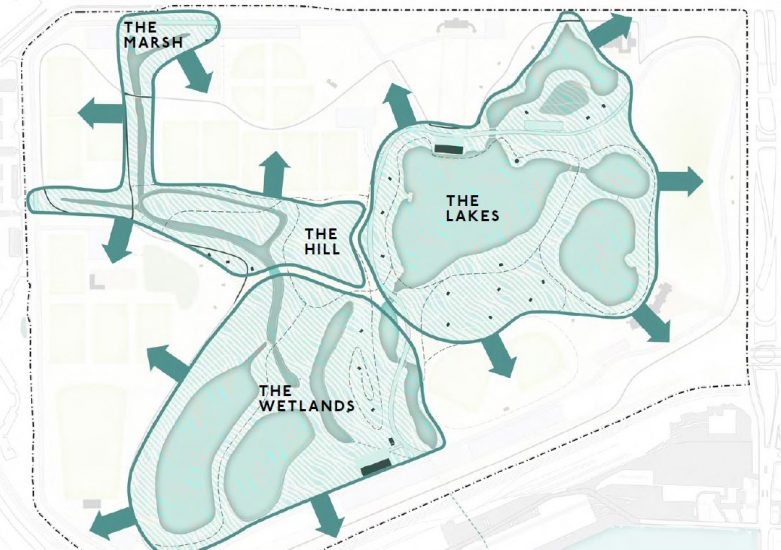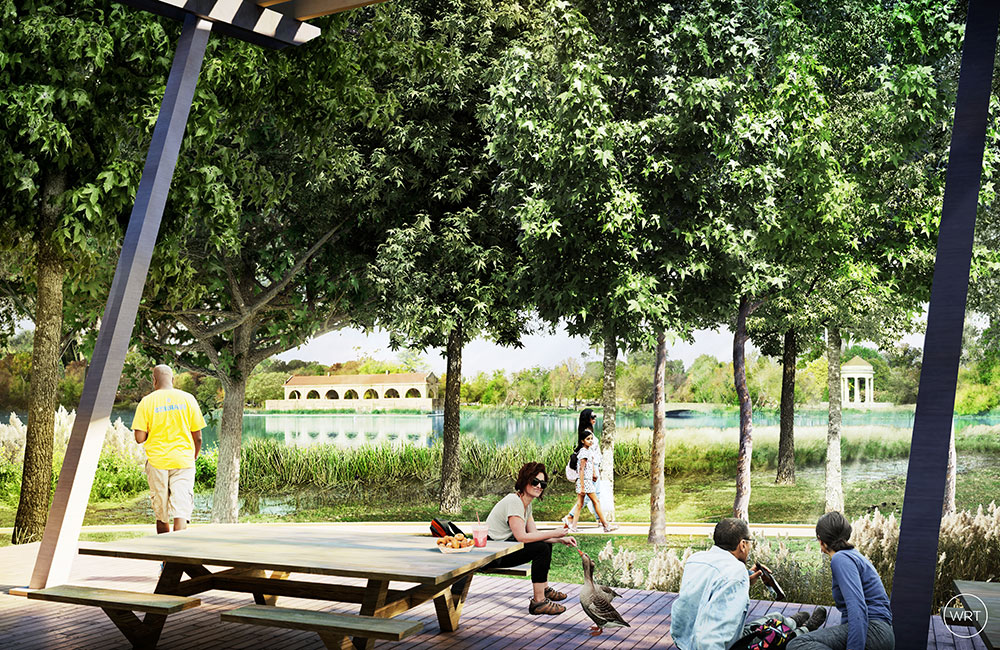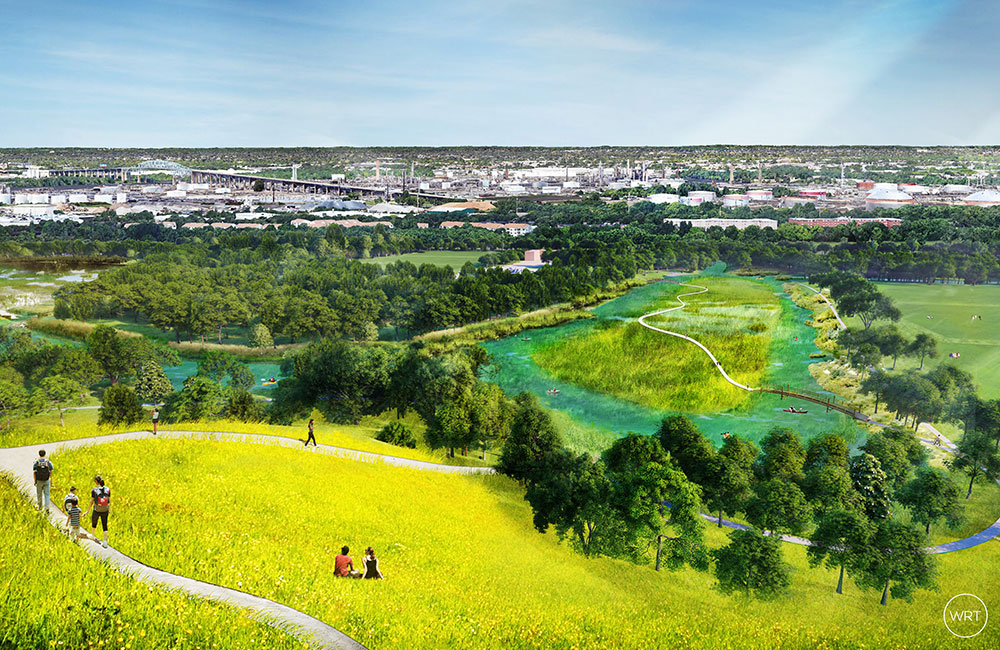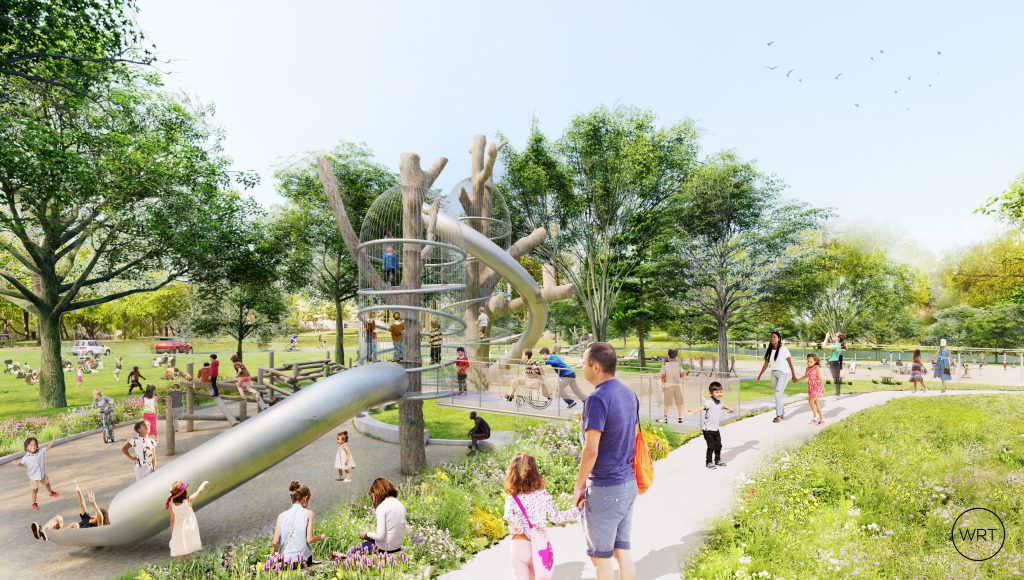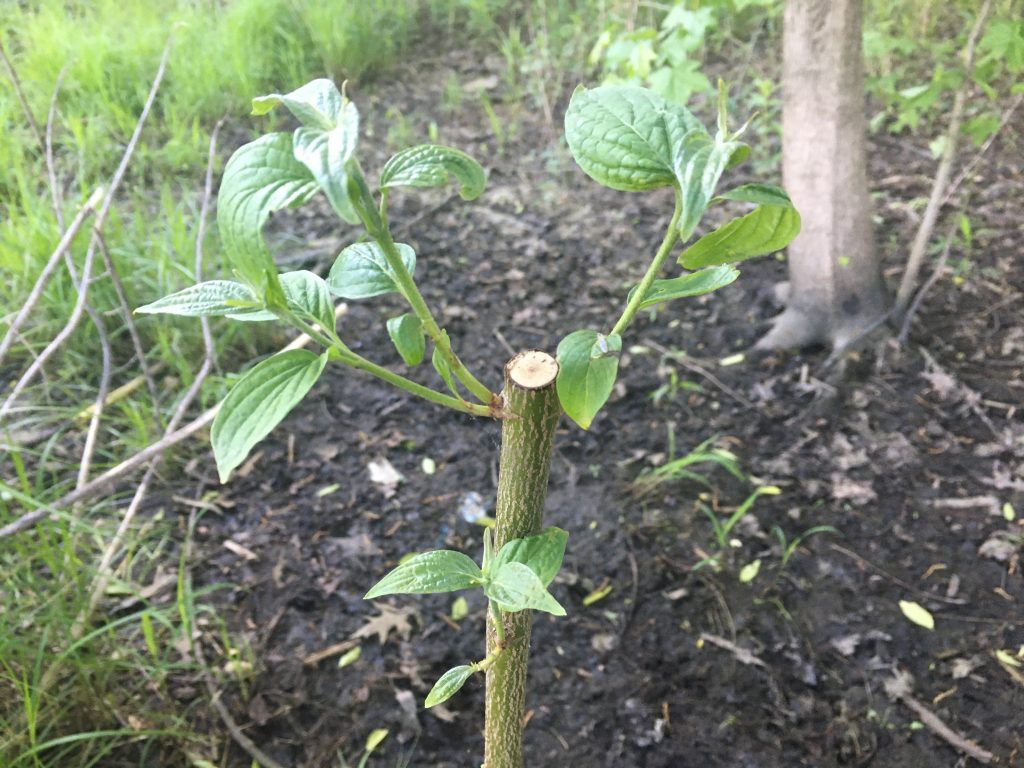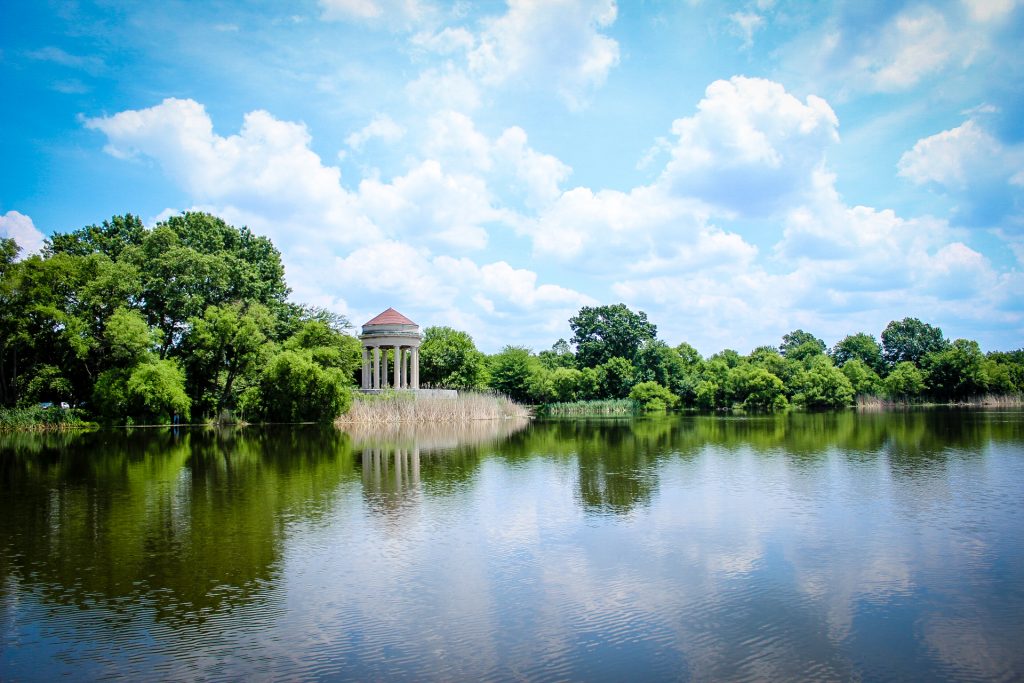A little known fact about FDR Park: it sits on marshland. In 1914, the park was built by shifting huge amounts of earth available from digging out the Broad Street Line.
That low-lying land is just one of the reasons why the South Philadelphia park suffers from frequent flooding, even after a mild rain.
Fast forward to 2018 and 2019, when planning experts took a close look and found that without intervention, FDR Park would be underwater in the hotter, wetter future Philadelphia faces. That’s why the FDR Park Plan uses nature-based solutions so that the entire park can become a critical piece of civic, public health, and ecological infrastructure in the face of a changing climate.
The FDR Park Plan calls for a park that balances nature, water, and human activity. The plan is organized into two zones: 1) an Ecological Core that manages water, connects parks users to nature, and provides critical native habitat and wildlife; and 2) an Urban Edge, where new amenities such as signature playgrounds and state-of-the-art athletic fields offer exciting recreational activities for everyone.
This is the first time in Philadelphia that a park plan has incorporated climate change projections as well as resiliency, including a comprehensive hydrology study that informed the entire plan.
Here are five projects located within the Ecological Core that will make FDR Park more climate resilient.
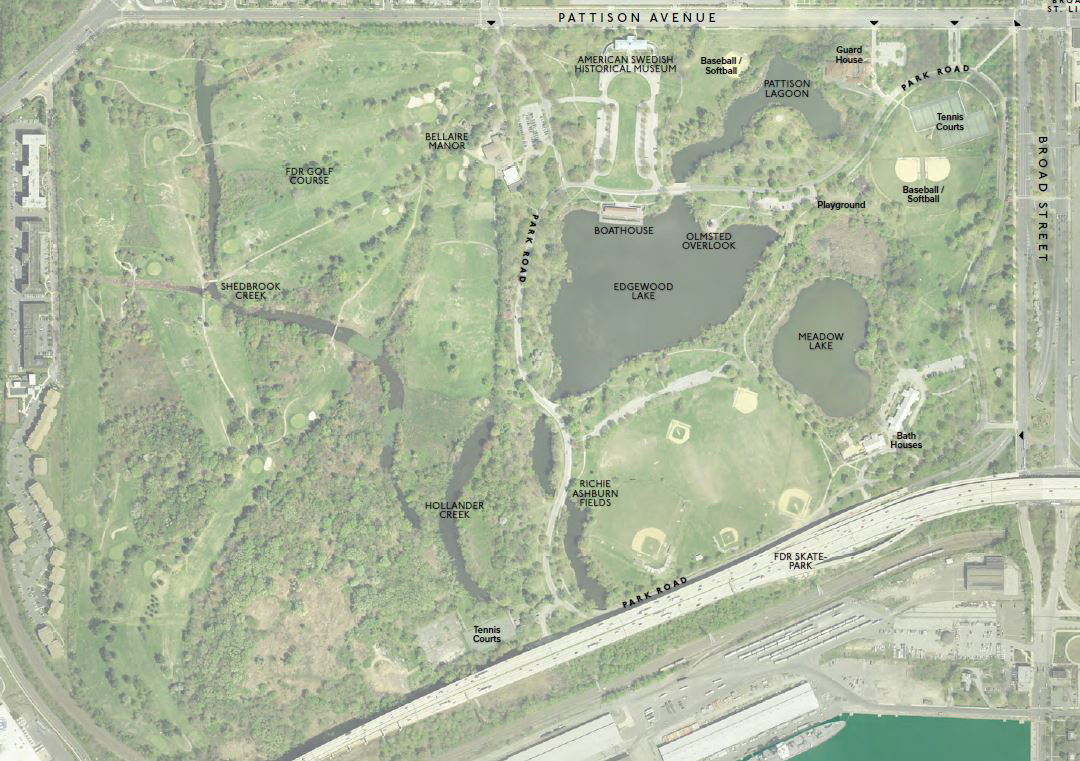
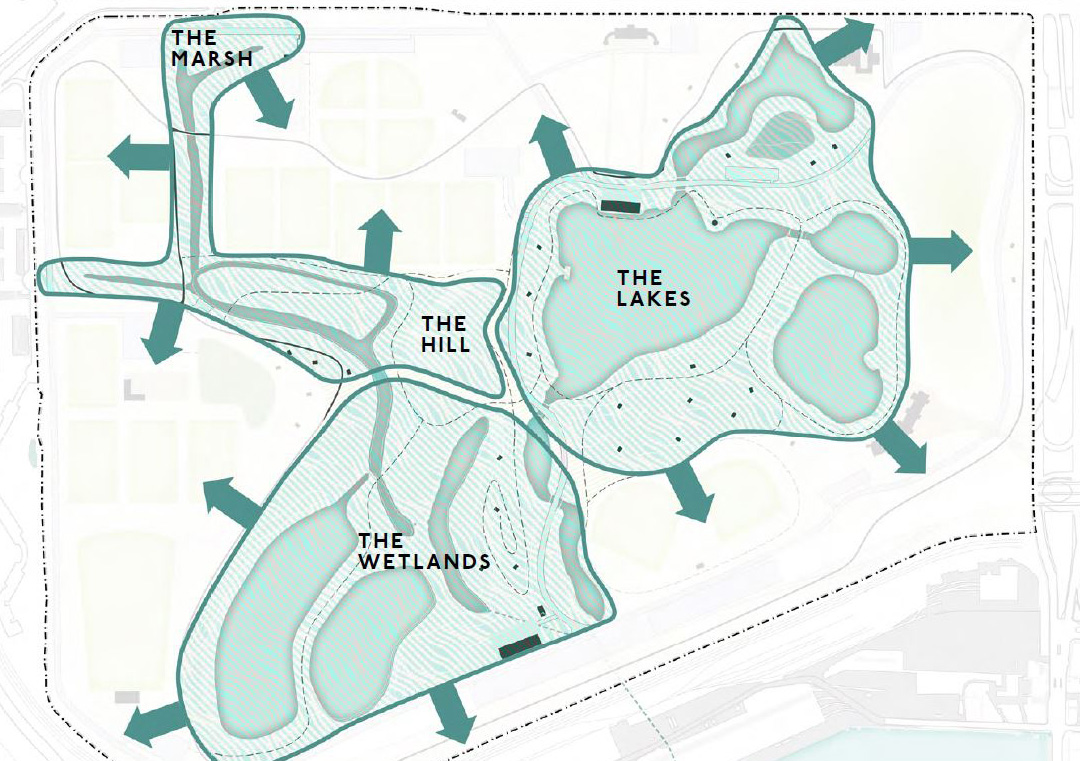
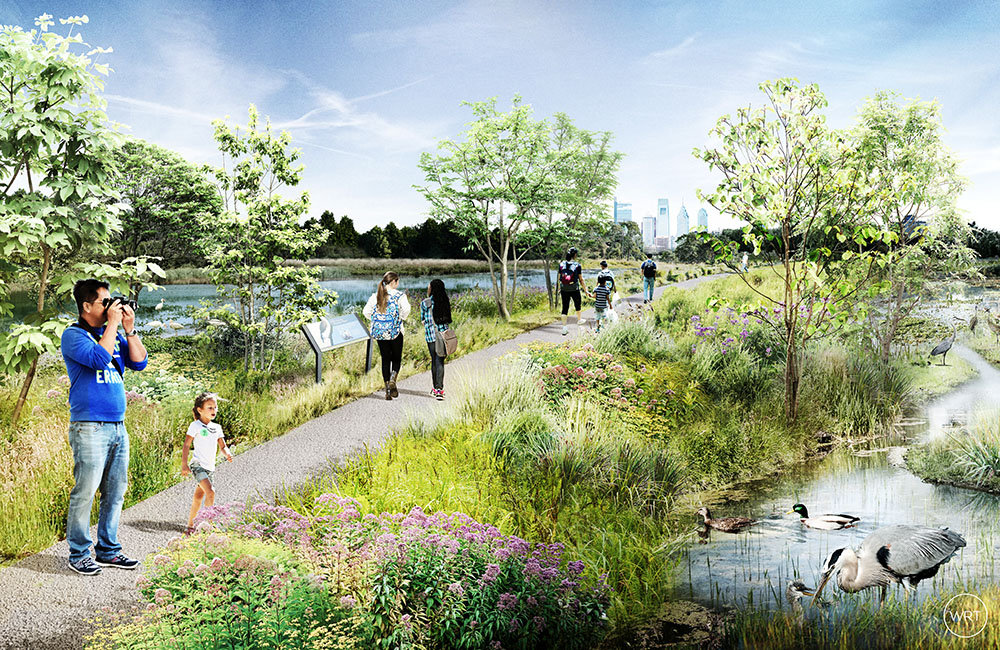
The Wetlands
In partnership with the Philadelphia International Airport, a new wetland system will be constructed on 33 acres in the southwest border of FDR Park. The wetlands will provide important wildlife habitat and deliver on the number one priority of the community: access to nature via trails, boardwalks, and water access points. Not only that, but the wetlands can are important for flooding: They act as natural sponges that absorb water after rains and storms, which help reduce flooding. They then slowly release this water back to streams, so they are crucial to the park’s climate resiliency, balancing out recreational areas, such as the athletic fields, which can remain high and dry.
Read more about the Wetlands project from PHL Airport.
Project estimated completion: 2025
The Lakes
FDR Park’s historic lakes (designed by the Olmsted Brothers)–Edgewood Lake, Pattison Lagoon, and Meadow Lake–function as the ecological heart and shape the local identity of the park. The plan provides easier access to the lakes with elevated boardwalks, a new wooded picnic grove, and access points for fishing and paddling. Restoring the lakes will improve water quality throughout the park, expand habitat and wildlife diversity, and manage stormwater–all essential for a more climate resilient FDR Park.
Projected completion date: 2029
The Marsh
Shedbrook Creek is a little known waterway at FDR Park that will be expanded and restored. The riparian buffer (an area adjacent to the water that contains a combination of plants to provide conservation benefits) will be significantly increased. Along the creek will be a tree-shaded corridor connecting areas of active recreation and play on the western half of the park, while adding stormwater capacity. The creek will also offer kayak or canoe access for the first time in the park’s history.
In addition to the restoration of Shedbrook Creek, the marsh project will include the creation of a meadow that will considerably expand the park’s floodplain, and support a variety of native plant and animal species.
Project estimated completion: 2026
Wildflower Hill
In an effort to create more elevated, beautiful, natural lands, and further protect much of the park from flooding, The Hill will reuse soil excavated from the Wetlands and the Marsh to create a rise about FDR Park. The Hill will provide a new way to explore and experience FDR Park, providing stunning views of the park, the Philadelphia skyline, and the Schuylkill and Delaware rivers. The Hill will change with the seasons, offering sledding in the winter, panoramas of autumn color, and meadow wildflowers in the spring and summer – plus exhilarating climbs and an extra-long slide year-round.
Project estimated completion: 2026
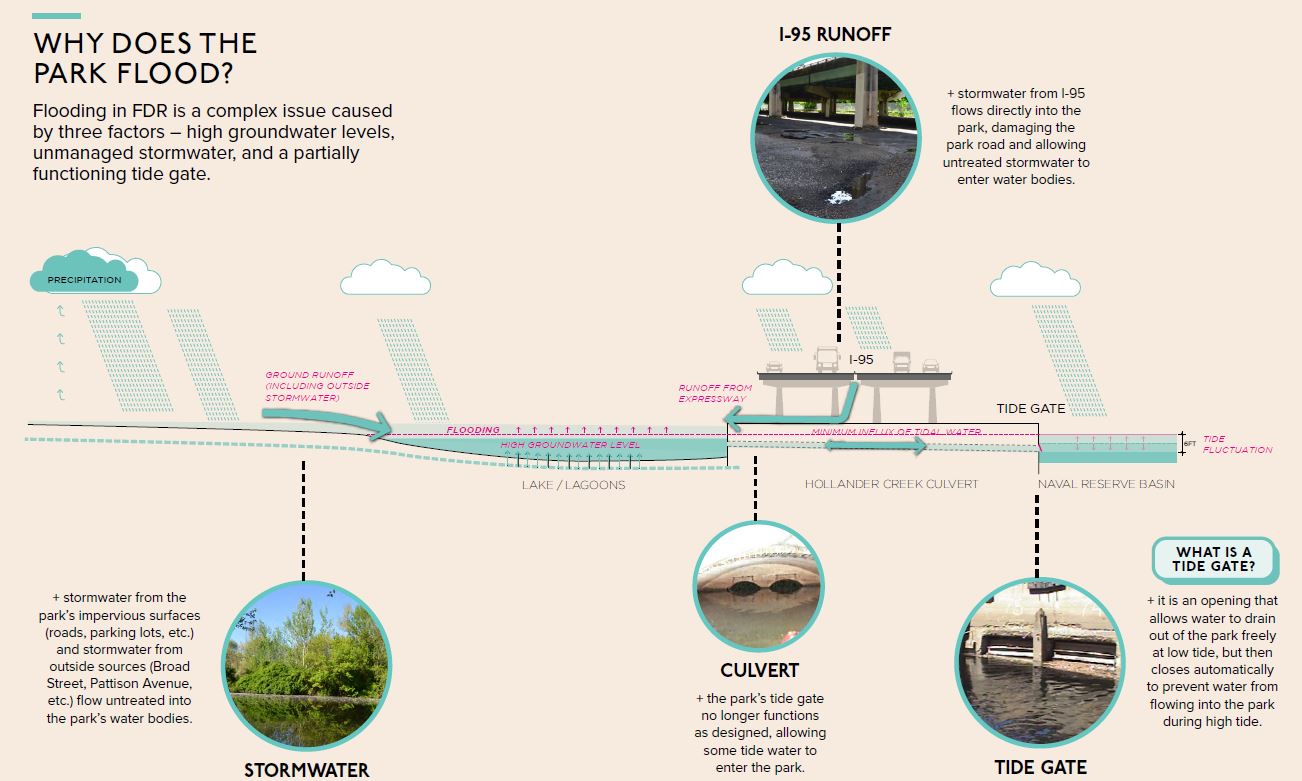 The Tidegate
The Tidegate
How does the park drain when it rains? Today, there is a single tidegate at the Navy Basin, which is only semi-operational, typically taking several days to dry out after a normal rain. Without this one tidegate, the entire park would be underwater!
The realities of climate change and hotter, wetter futures will likely mean an increase in the intensity and frequency of rainstorms, which will only exacerbate current flood conditions.
The Park Plan calls for a new tidegate to ensure the park will be able to drain effectively into the Reserve Basin, reducing overall flooding.
Projected completion date: 2025
For the latest updates on FDR Park, be sure to sign up for our newsletter. To support our work bringing Philadelphia’s parks to life, become a member of Fairmount Park Conservancy today!
